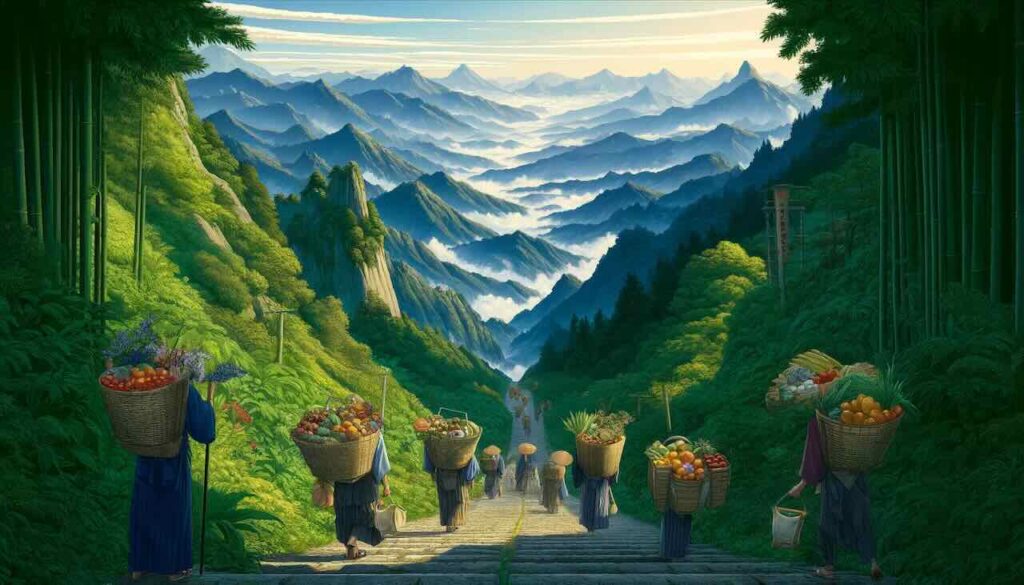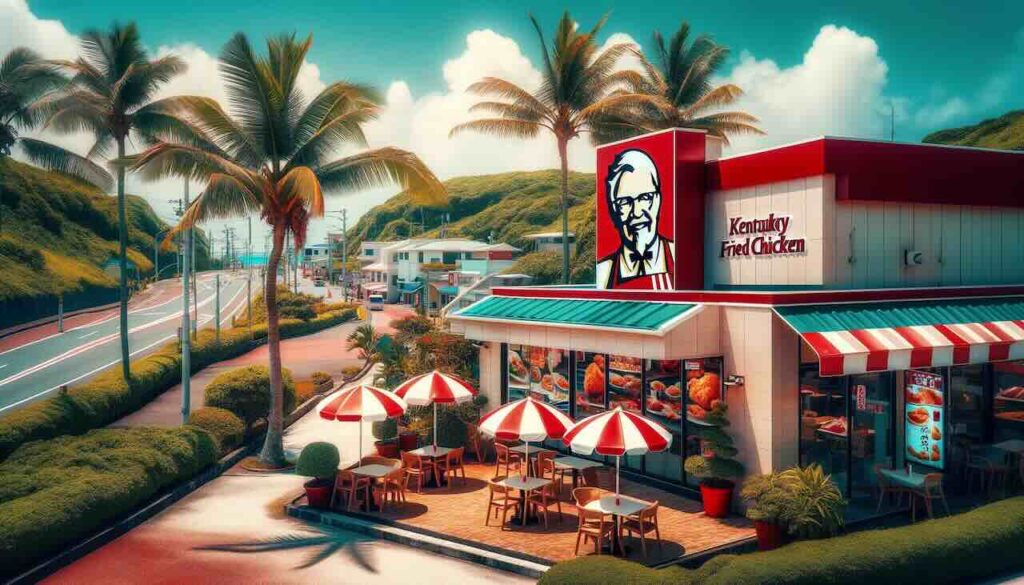Japan’s Edo period (1603–1868) is often remembered for its samurai class, ukiyo-e prints, and strict feudal order. But behind this carefully controlled society was a thriving economic network, sustained by the dynamic flow of goods across the country. Among the most fascinating features of this system was a unique phenomenon known as nobosemono (上り物) — literally, “upward goods.”
More than just a term for shipping, nobosemono reveals the cultural and economic heart of early modern Japan.
What Is Nobosemono?
Nobosemono referred specifically to goods that traveled from Edo (modern-day Tokyo), the seat of the Tokugawa shogunate, “upward” toward the imperial and cultural centers of Kyoto and Osaka.
Why “upward”? In traditional Japanese geography, Kyoto — home to the imperial court and long considered the spiritual pinnacle of the nation — was viewed as “above” Edo, even though Edo lay geographically downstream. This directional language reflected not only physical orientation but also long-standing cultural hierarchies.
Thus, nobosemono represented the steady northwestward flow of Edo’s products into the Kansai region, balancing the historic east-to-west trade that previously flowed in the opposite direction.
The Historical Context: Edo’s Rise and the Shift in Trade Patterns
Prior to the Edo period, Kyoto and Osaka dominated Japan’s political, cultural, and commercial life. But with the establishment of the Tokugawa shogunate in Edo, the power center shifted dramatically eastward.
- Edo grew rapidly into the world’s largest city by the 18th century, with a population surpassing one million.
- A growing urban population created surpluses in craftsmanship, agriculture, fishing, and publishing.
- Kyoto and Osaka, while retaining their cultural prestige, increasingly depended on Edo’s economic vitality.
Nobosemono became a vital artery connecting these regions — not simply moving goods, but transmitting Edo’s emerging identity as the cultural and commercial capital of early modern Japan.
What Goods Made Up Nobosemono?
The variety of nobosemono reflected the incredible economic diversity of Edo itself. Among the many upward-flowing commodities were:
1. Ocean Bounty: Edo’s Fisheries
- Tuna (maguro), prized for sushi and sashimi.
- Bonito (katsuo), essential for making dashi, the cornerstone of Japanese cuisine.
- Shrimp, abalone, and seaweed.
- These seafood delicacies, caught in Edo Bay, were highly sought after in Kyoto and Osaka, enriching Kansai culinary traditions.
2. Agricultural Specialties
- Edosaki lotus roots, known for their sweetness and texture.
- Adachina greens, a specialty of Edo’s fertile river plains.
- Fresh produce from the Kanto region offered new flavors for Kansai chefs and home kitchens.
3. Edo’s Master Crafts
- Edo Kiriko cut glass, renowned for its geometric beauty.
- Edo Kimekomi dolls, representing exquisite craftsmanship.
- Artisans developed highly specialized goods that became luxury items in Kyoto’s refined circles.
4. Books, Prints, and Intellectual Currents
Perhaps most fascinating was the flow of intellectual culture:
- Ukiyo-e prints, reflecting Edo’s vibrant urban life, fashion, and entertainment.
- Woodblock-printed books, including travel guides, fiction, and technical manuals.
- These printed materials allowed Edo’s artistic and intellectual innovations to circulate nationwide, shaping cultural tastes even in imperial Kyoto.
The Arteries of Commerce: Japan’s Road and Sea Networks
Nobosemono depended on Japan’s extensive transportation infrastructure, which was highly advanced for its time:
- The Tōkaidō and Nakasendō highways connected Edo to Kyoto and Osaka by land.
- Coastal shipping routes (kamigata-sen) carried goods by sea, supplementing overland traffic.
- A network of post towns (shukuba) enabled efficient relay-style transport, including official couriers, private merchants, and specialized freight carriers.
Japan’s meticulously maintained highways and checkpoints ensured that goods could move reliably while the central government maintained political control.
Nobosemono as Cultural Cross-Pollination
Beyond economics, nobosemono played a key role in shaping early modern Japanese national identity:
- Edo’s seafood and produce changed Kyoto’s culinary palette, influencing kaiseki cuisine.
- Edo’s prints and literature influenced Kansai’s arts, theater, and fashion.
- In turn, Kansai’s classical traditions and refined tastes enriched Edo’s evolving culture.
This two-way cultural dialogue, mediated by nobosemono, helped unify Japan not just administratively under the Tokugawa shogunate, but culturally as well.
The Legacy of Nobosemono Today
The spirit of nobosemono lives on in modern Japan:
- Regional specialty foods and crafts continue to flow across Japan’s bullet train and logistics networks.
- Tokyo remains Japan’s modern commercial center, but Kansai remains a cultural powerhouse.
- Many of the food pairings, art forms, and regional identities that define Japanese culture today were shaped in this dynamic Edo-period exchange.
Nobosemono stands as an early model of regional integration and national cohesion through commerce — a uniquely Japanese version of early globalization.
Summary
Nobosemono was far more than the simple movement of goods — it was the engine of Japan’s internal economy, the bridge between political centers, and the vessel for transmitting new cultural trends across the nation. In studying this upward flow of Edo’s bounty, we glimpse how commerce, culture, and politics wove together to build the rich tapestry of early modern Japan.
Every tuna shipped, every ukiyo-e print sold, and every book read helped to create not only Japan’s national economy but also its vibrant cultural identity — one shipment at a time.


